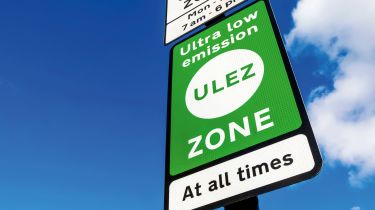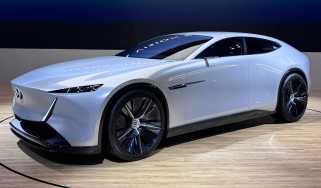It’s official: new expanded ULEZ has worked… but not as well as the old one
ULEZ expansion has helped bring down emissions in Greater London, but results show it isn’t as effective as original implementations of the scheme

New data from London City Hall has revealed that last year’s expansion of the city’s Ultra-Low Emissions Zone across all London Boroughs has successfully reduced harmful emissions – but not as much as its original implementation did back in 2019.
Just six months after its implementation, the Greater London Authority (GLA) has found that ULEZ’s expansion has cut harmful roadside emissions by 3.5 per cent, with Nitrogen oxide (NOX) gases – a pollutant that reacts in the air to form harmful Nitrogen dioxide (NO2) – estimated to have dropped by as much as 13 per cent from car traffic and seven per cent from vans.
This is partly thanks to the £12.50 daily charge, which has forced many motorists to buy a newer, ULEZ-compliant car; City Hall states in its report that while the number of vehicles on the road “[has] stayed broadly the same compared to before the London-wide ULEZ expansion”, the number of ULEZ-compliant cars in the outer Boroughs has increased from 93 per cent in June 2023 to 97.1 per cent in the subsequent six months.
London Mayor, Sadiq Khan, said: “The decision to expand the ULEZ London-wide was a difficult one… [but the] report shows that the ULEZ is working even better than expected.”
“The expansion to outer London is already having a significant effect,” he continued, “driving down levels of pollution, taking old polluting cars off our roads and bringing cleaner air to millions more Londoners.”
However, the study also confirmed that while the recent ULEZ expansion has brought about some positive impact, its effects are not nearly comparable to those of the scheme’s original introduction five years ago.
A year after the first ULEZ expansion, the scheme was reported to have almost halved (48 per cent) harmful emissions in Central London and reduced them by 21 per cent in Inner London.
It was well-documented in the recent Mayoral election that the Conservative candidate, Susan Hall, had pledged to scrap ULEZ altogether, citing it as part of the “war on motorists”. Tory London Assembly member, Neil Garret said the latest report “shows the £500m cost of expanding the ULEZ to outer London has delivered minimal reduction in air pollution, despite the mayor’s claims.”
Nowadays, ULEZ exists as a lucrative money-making scheme for Transport for London; figures show that in its first month, the Ultra-Low Emissions Zone raked in as much as £23.6 million, rising to £130 million five months later.
That said, TFL states that the scheme won’t start making money until 2026; over £210 million has been committed to a scrappage scheme in which drivers of non-ULEZ-compliant cars have the choice of either a £2,000 payment or a lower sum plus an annual London bus pass.
What are your thoughts on the ULEZ? Tell us in the comments section below...
Find a car with the experts







